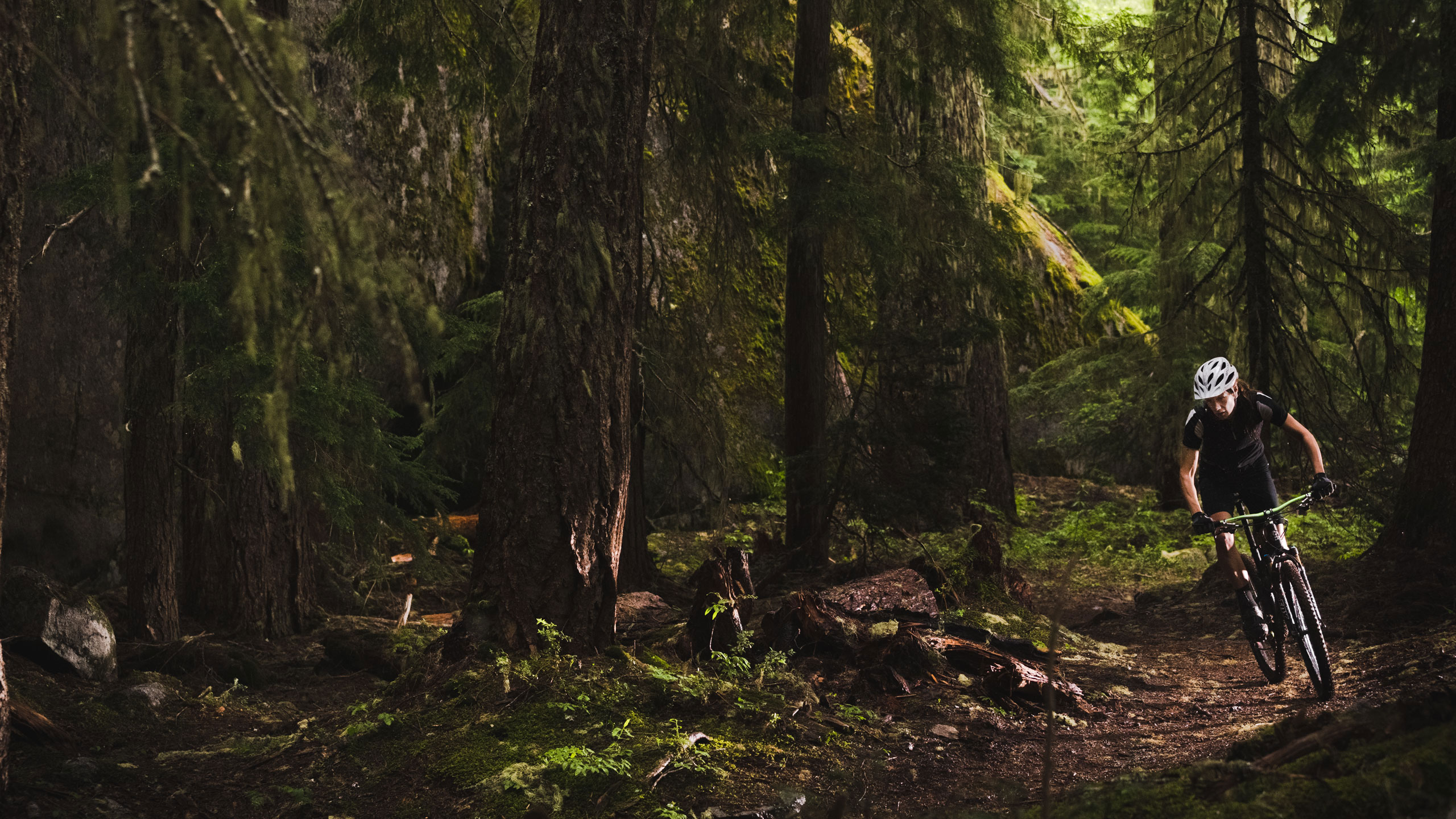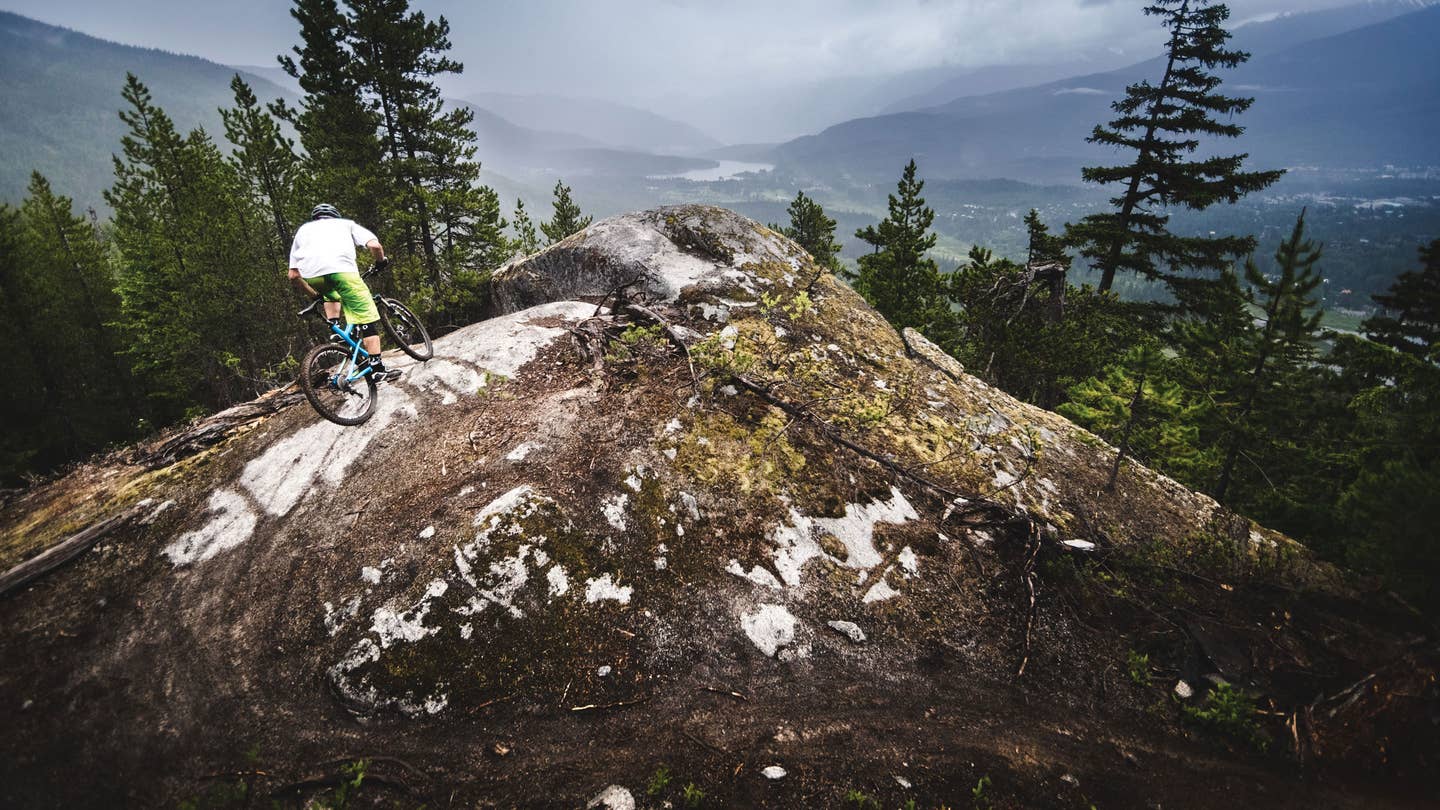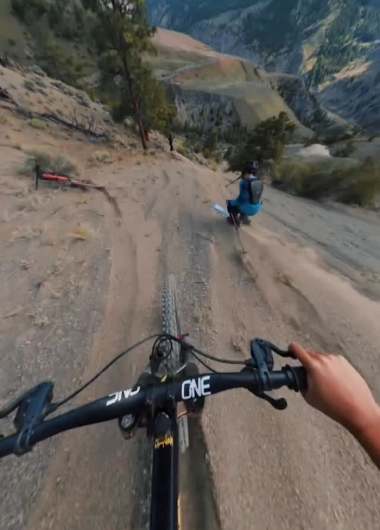Popular Stories
 Photos courtesy of Rocky Mountain
Photos courtesy of Rocky Mountain
Riding
the Nikkei Mountain to 50-to-1 loop in Cumberland, British Columbia maybe the ultimate bike test loop.
It starts with a steady logging road climb from the old coal mining community that's since become a hub for bike and ski bums on Vancouver Island. Then it rolls along through
twisty singletrack with punchy climbs before another grinding road climb. At
the summit, gravity takes over with lots of flow interspersed with steep drops
before winding across a root and rock-studded plateau and then a longer,
faster, jump-infused, and, at times, technical descent back to Dodge. The
variety ensures any weaknesses are exposed in due time.
On
the Rocky Mountain Thunderbolt, we loved the entire loop.
The
770 is the top of the line Thunderbolt, Rocky's new 120 mm travel alloy steed designed to slot in somewhere between a pure-bred XC race bike and a standard trail bike, with an emphasis on more versatility than the travel numbers would suggest, and more playful handling and geometry rounded out by a 68.5 degree headtube angle. The 770 has three siblings with the same angles, lengths, and aluminum frames, just lower price point components. In the parking lot, we were
already smitten with the 770's matte black paint job, but were mixed on the neon
green accents. The rest of the bike is nicely equipped with Fox Float shocks, Shimano XT brakes and a mix of XT, SLX and XTR gearing
in a 2X10 set up. We're pretty sold on the performance of the twenty gears,
finding it more than sufficient 99% of the time.
This
is a pretty deluxe parts spec for a complete bike coming it at $4000 MSRP. Credit for that can probably go to
the fact that Rocky chose an aluminum frame over the carbon fiber frames we're
seeing more and more at this price. For the pound or two difference, we think the value more than outweighs the difference on the scale, especially given that the Thunderbolt is built more to make your trail rides as fun as possible, instead of providing a weight-weeny platform for XC race wins.
 Thomas Vanderham and Jen make climbing look loads more graceful than our hack team of writers ever could...
Thomas Vanderham and Jen make climbing look loads more graceful than our hack team of writers ever could...
Once
on the bike, grinding up the opening climb, we immediately noticed the top tube
length to be shorter than we expected, putting us in a fairly upright and slack
position. We figured this would come into play on steeper uphills, but even
when we hit a really punchy section of climbing, we could stay seated and the
front end never lifted.
Not surprisingly, the bike felt really efficient climbing with little bob in the dual
suspension, but we spent most of the time on the road with the shocks locked
out via a thumb push button mounted on the handlebars. It adjusts the front and
rear suspension between climb, trail and descend settings. We quickly came to
love this feature, regularly jumping from one setting to another as the terrain
dictated, far more often than we would have if the adjustment had been only on the shocks. The one
question that exists with this luxury is durability. A hard over-the-bars crash
left it cracked and only partially operational.
 Up, down, left, right, sideways-this is where the Thunderbolt wants to be.
Up, down, left, right, sideways-this is where the Thunderbolt wants to be.
At
the summit, we switched into descend mode and let go of the brakes. Rocky lumps
the Thunderbolt into the cross country category, and on paper, specs like 120 mm
front and rear suspension and a twenty-eight pound weight suggests that's where this bike
belongs. It's another story on the trail. Navigating technical downhills,
flying through flowy singletrack and even launching small table tops, the
Thunderbolt felt at home through it all, never leaving our crew of testers
wishing for more suspension or agility. The 120 mm travel sucked up not just
big hits but lots of small stuff too, providing a platform that felt more like a longer travel bike, upping
control especially in high speed situations.
Join Our Newsletter
Coasting
out of the downhill section, we rolled into technical cross country. Rocky
paired the Thunderbolt with 27.5 inch tires and a fairly slack 68.5 degree
headtube angle and at the same time shortened the distance from the pedals to
the rear hub, pulling the rear tire almost under the rider. This creates a
small feeling bike that could weave through rocks and roots with nimble ease
and not oversteer at higher speeds.
But
in the wet roots of this rolling section, we lost confidence in the tires. For
a company based in Vancouver, Canada, the Continental X Kings performed
terribly in wet conditions, which is predominantly what we tested them in.
But if dry dirt is what's available where you ride, you won't feel the need to switch rubber.
Another
feature we would like to see on this bike at this price is a dropper seat post.
It would have come in handy as the terrain switched from down to rolling to
down again. With a dropper seat post this bike would be tricked out completely. Although the handlebar would look like a vintage telephone switchboard, the ability to change the suspension characteristics on the fly begged for the ability to get the seat out of the way and charge the downhill sections even harder.
Otherwise, it transitioned through the varied terrain smoothly right to the finish. A large range of testers rode this bike and
everyone agreed it was one of the most comfortable bikes to ride without
adjusting stems, bars or seat positions. The angles and tube lengths seem to
create a riding position that is both powerful and efficient and upright enough
to feel all-day-comfortable.
 Fun on flats, too!
Fun on flats, too!
Cumberland
is an awesome all-mountain riding destination, perfect for testing a bike like
the 770. But we also tested it in more cross country terrain. Whenever,
wherever, we found it to be more than capable of everything from racing to all
day epics.
When
it comes to a bike that's fun to ride, no matter the terrain, how it makes you
feel while riding it is the ultimate test. In the case of the Thunderbolt it
felt good from mile one through mile 25.







